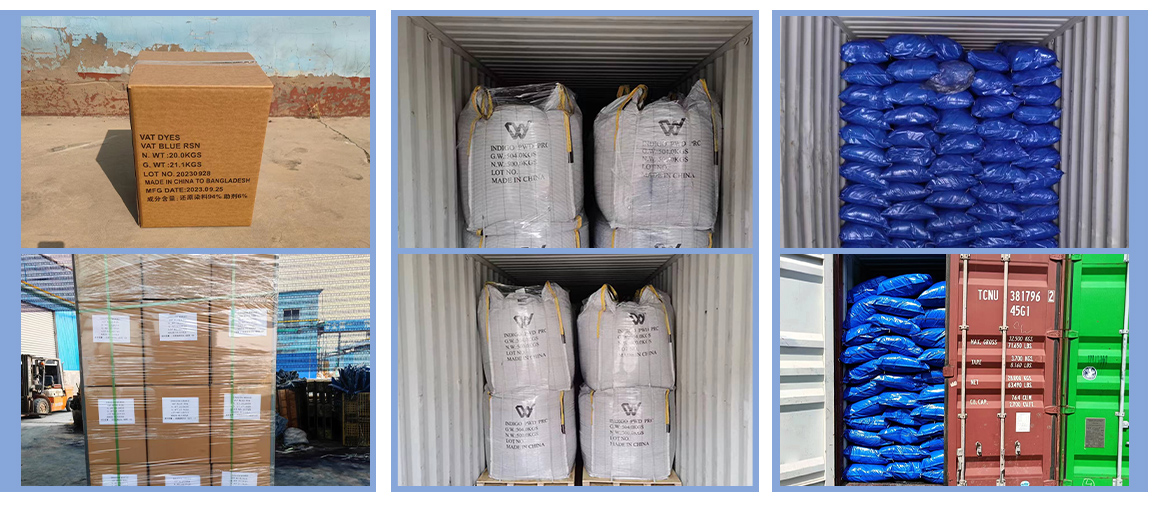Indigo Blue Vat Blue


The intricacies of Chinese indigo dyeing are not just preserved in history but are being revitalized in contemporary practice. Artisans are innovating traditional methods while respecting authentic practices to meet modern aesthetic demands. By engaging with global fashion and home markets, they serve as cultural ambassadors, spreading awareness and appreciation for this ancient art form on a world stage. The renewed interest from consumers, who seek sustainable and unique products, underscores the trustworthiness of naturally dyed textiles. Indigo-dyed fabrics from China not only showcase aesthetic appeal but also emphasize sustainability. The entire process of traditional indigo dyeing is grounded in eco-friendly principles. Indigo plants contribute to soil health and biodiversity, and the dye extraction process avoids harmful chemicals. These sustainable practices enhance the authority of the craft in today's environmentally-conscious market. By choosing products created through traditional indigo dyeing techniques, consumers participate in a more sustainable, ethical approach to fashion and textiles. The authenticity and allure of Chinese indigo-dyed products celebrate a harmonious blend of nature, artistry, and technique. From rural heartlands where indigo cultivation thrives to urban centers that buzz with creative renovation, the journey of this dye embodies a cultural narrative steeped in tradition. This narrative extends beyond mere aesthetics, representing an enduring commitment to craftsmanship and environmental stewardship. Exploring this art form opens a window into a world where every indigo-dyed textile is not just a product but a piece of cultural and historical storytelling. Today, as the fashion industry increasingly gravitates towards sustainable and heritage practices, the meticulous craft of Chinese indigo dyeing stands as a paragon of this movement. With an emphasis on quality, authenticity, and the profound interconnection between humans and their environment, traditional indigo dyeing continues to inspire artisans and consumers alike, promising a legacy that beautifully stitches the past to the future.
-
The Timeless Art of Denim Indigo Dye
NewsJul.01,2025
-
The Rise of Sulfur Dyed Denim
NewsJul.01,2025
-
The Rich Revival of the Best Indigo Dye
NewsJul.01,2025
-
The Enduring Strength of Sulphur Black
NewsJul.01,2025
-
The Ancient Art of Chinese Indigo Dye
NewsJul.01,2025
-
Industry Power of Indigo
NewsJul.01,2025
-
Black Sulfur is Leading the Next Wave
NewsJul.01,2025

Sulphur Black
1.Name: sulphur black; Sulfur Black; Sulphur Black 1;
2.Structure formula:
3.Molecule formula: C6H4N2O5
4.CAS No.: 1326-82-5
5.HS code: 32041911
6.Product specification:Appearance:black phosphorus flakes; black liquid

Bromo Indigo; Vat Bromo-Indigo; C.I.Vat Blue 5
1.Name: Bromo indigo; Vat bromo-indigo; C.I.Vat blue 5;
2.Structure formula:
3.Molecule formula: C16H6Br4N2O2
4.CAS No.: 2475-31-2
5.HS code: 3204151000 6.Major usage and instruction: Be mainly used to dye cotton fabrics.

Indigo Blue Vat Blue
1.Name: indigo blue,vat blue 1,
2.Structure formula:
3.Molecule formula: C16H10N2O2
4.. CAS No.: 482-89-3
5.Molecule weight: 262.62
6.HS code: 3204151000
7.Major usage and instruction: Be mainly used to dye cotton fabrics.

